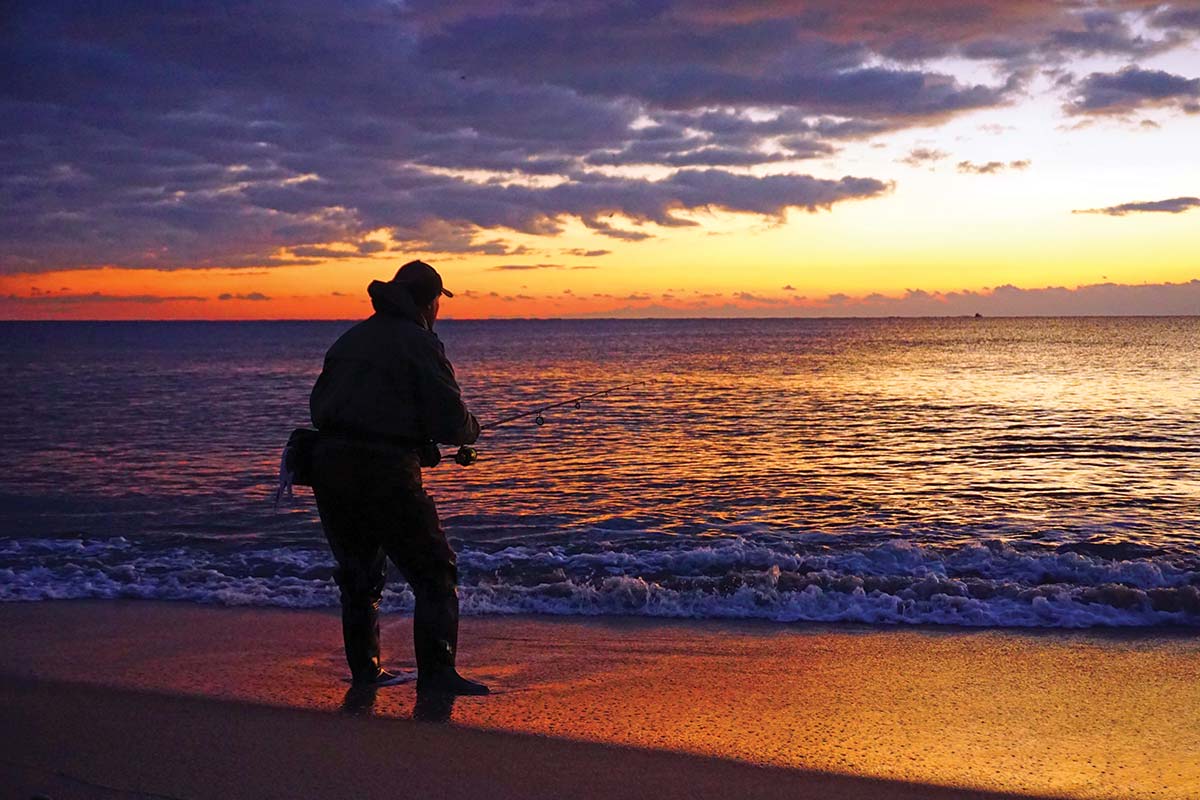
A look at some of the latest, greatest and most economical choices out now in the surf rod & reel market.
I’m not ashamed to say, I’m a bucket fisherman at heart.
One of my go to shops growing up at the Jersey Shore was run by Bruce and Pat Hoagland, now the location of Surf City Bait and Tackle on Long Beach Island (LBI). “I believe Bruce called them the LBI Tackle Box,” Pat recollected as I smiled thinking back to the 5-gallon industrial bucket loaded with fresh bunker, clam, a handful of sinkers and various terminal tackle I’d carry up to the beaches with the rest of the bucket brigade.
Yes, I still surf fish with a bucket from time to time, an assortment of 4- to 8-ounce pyramid sinkers rattling around in the bottom with an assortment of three-way rigs and fishfinder slides, a soft cooler with fresh bunker and a sand spike sticking out. Then again, I’m just as likely to take a single tackle tray of tins, or a fully loaded plug bag draped across my shoulder.
Surfcasting can be as simple or as complex as a person wishes to make it. Despite what you may have heard from the cultural influencers online, there’s no hard and fast rule to what it takes to gear up to hit the surf. A few years ago when I was living in New York and the striper population was booming, I’d gotten exclusively into plugging and bucktailing. A friend’s teenage son was also becoming immersed in surfcasting and was interested in tackling the South Shore surf on Long Island. I offered to show him one of my favorite little stretches of beach one fall morning where I’d been having good success with stripers in the wash just after dawn. “Bring your favorite surf outfit, a few lures that you like, I’ll meet you at 6 a.m.,” I texted.
Not knowing exactly what he’d have personally, I packed a spare rod and reel, a second plug bag and another set of leaky waders (the only ones I had that fit his feet). When his dad delivered him to the beach that morning he was roughly 45 minutes late. In the back of the car was a crate of lures, the likes of which was duly impressive. But the thousands of dollars of plugs he’d brought – some of the most popular gear to be found on social media and internet chat rooms – wasn’t suited for the bite or the conditions; the fact that he arrived at street end with only minutes left in the morning’s sand eel bite didn’t help.
The young man’s view on surfcasting was that you needed at bare minimum $2,000 invested in gear in order to be a surfcaster, as per the most hardcore of influencers; I believe it’s a theory held by many who are venturing into the surf for the first time or making a return for the fall run. But the fact is, the gear on the market today is the best there’s ever been, and prices are falling for the most part due to a myriad of economic reasons.
Really Reel Basics
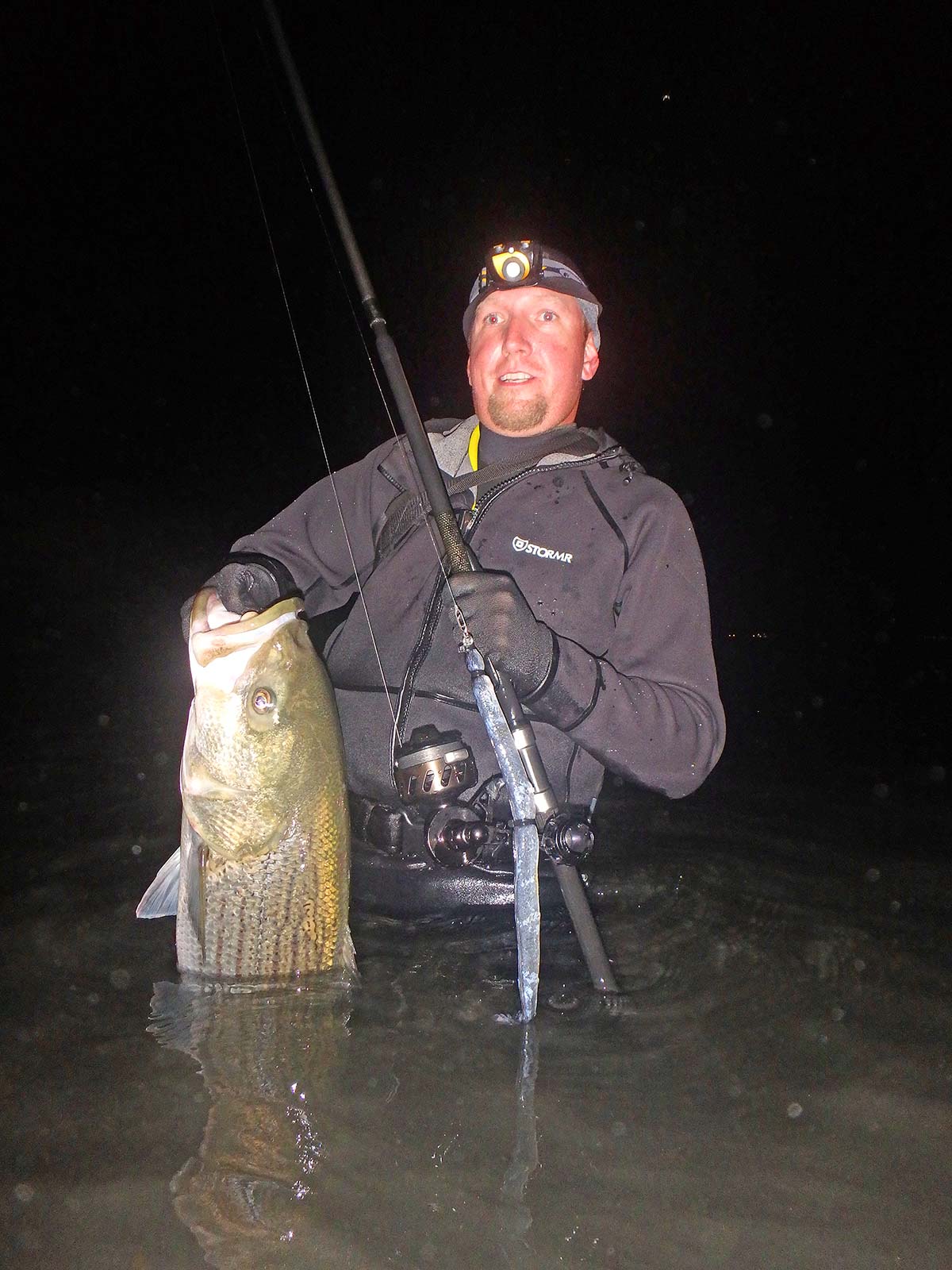
Suffice to say, the initial investment towards becoming a dedicated surfcaster doesn’t have to amount to a few mortgage payments. Let’s start with the reel; for folks who spend a lot of time in the surf getting wet with their gear, the Van Staal VR200 for example ($610) is a stellar choice as it’s completely sealed and waterproof, a solid titanium spool shaft and forged from 6061-T6 Aluminum capable of holding 500 yards of 40-pound braid. About a dozen or so years ago I found myself “plugging” almost exclusively and found the bail-less option to my liking; for those who started spinning with an automatic bail, using a reel without a bail takes a little practice but can save a few plugs along the way that might otherwise snap off when the auto-bail decides to engage in mid-cast. 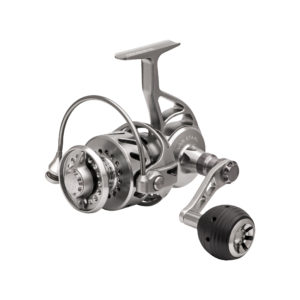
Similarly, the Tsunami SaltX STX6000 ($399) holds 350 yards of 40-pound braid, boasts 14 seals to prevent intrusion by saltwater and sand, and is built with forged and CNC machined A6061 aluminum body and rotor and stainless steel main gear. A heavy-duty, rotor brake controlled, fully manual bail system is found on each SaltX model; again for surfcasters who spend most of their time casting and retrieving lures, an automatic bail is sometimes problematic lending the caster to find it more palatable to cast and then move the bail over to pick up the line each time.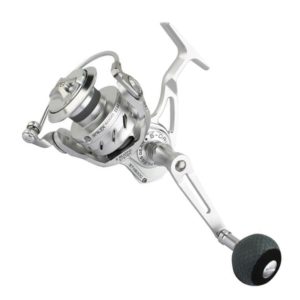
Another great option from Daiwa is the new BGMQ Spinning Reels; a single-piece Monocoque aluminum body, this latest Daiwa spinning reel boasts a giant main gear where the whole plate screws on. That means no individual screws for the plate, resulting in a smaller bodied reel with a very large gear. Nine rubberized seals make it a good selection for the surf, with the BGMQ6000 ($219.99) a good match for a 9-foot rod, whereas the BGMQ8000 ($249.99) a good for throwing larger chunks or wood plugs on a 10- to 12-foot rod. Reel capacity wise, you’ll be running from 240 yards of 40-pound braid up to 330 yards of 40-pound braid, more than ample for the Northeast and Mid-Atlantic surf. 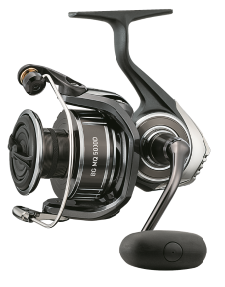
Growing up in South Jersey in close proximity to the Philly there was always a lot of PENN gear in our home; the PENN Z series reels were undoubtedly one of the very first workhorse reels in the Northeast surf heading into the second half of the 20th century. Today’s PENN Z series is slightly heavier than either the SaltX or VR reels by a couple of ounces, the 704Z with the bail and the 706Z without the bail ($199) holding 400 yards of 40-pound braid and 365 yards of 40-pound braid respectively. Again, manual bail operation is often preferred by those casting plug after plug for hours at a clip; if you also plan on using this reel for bait slinging, manual bail operation is the way to go, but I’d advise against the actual bail-less feature. 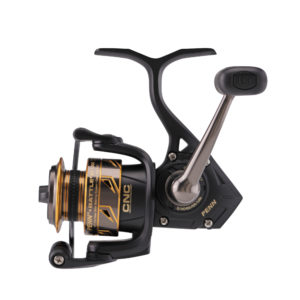
It takes some getting used to, grabbing the line with a hockey-taped finger and looping it back on the pick-up mechanism. For an all-around good option from PENN you might consider the new Battle III series out this fall starting with the 5000 series ($134.95) with oversize handle capable of handling 240 yards of 40-pound braid. The 10000 series ($154.95) will be interesting for beach sharkers next summer, with 40 pounds of drag and able to hold 710 yard of 65-pound braid.
Saltwater anglers have come to known Shimano’s Saragosa SW spinning reels for the retrieving power, toughness and strength needed for any fishing situation. The series has been enhanced with added Shimano technology and more sizes offered in 2020 providing a lineup that surfcasters will find more durable, offering better power, and coming in lighter than past generations. Look at the new Shimano Saragosa 6000XG ($259.99) as a terrific option for the striper surf able to hold 200 yards of 40-pound braid with 22 pounds of drag. There are also the Shimano Ultegra XTD Surf Spinning Reels which start at $189.99 that will fit the bill nicely.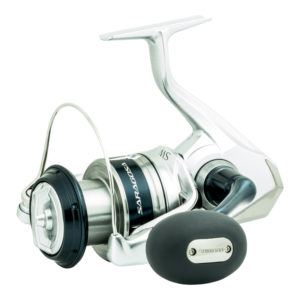
Most of the top saltwater spin reels available in our local shops are “sealed” in one way, shape or form; but waterproofing and drag capacity are always big sellers with a lot of hardcore surfcasters. For those swimming from rock to rock, wading to the bar, fishing around the clock and generally giving 100% around the clock during the fall run, spending $500 to $1,000 for a surf reel is a necessity. But getting the most out of your fall surf options doesn’t have to lead to a bank foreclosure either. The concept of 40-pounds of drag on a surf reel is attractive, but 20 to 25 pounds of drag is more than sufficient for most of our Northeast and Mid-Atlantic surf options.
Along those lines, another quality/price option for starting out on the spin side of things in the surf is the new Okuma Rockaway reel ($95) that is equipped with 4BB and 1RB stainless steel bearing, with a compact design and rigid metal handle design and gets you about 375 yards of 40-pound braid. These reels with 26 pounds of drag pair nicely to the Okuma Rockaway Surf rods and new heavier powered Rockaway HD Surf Rods coming out in September.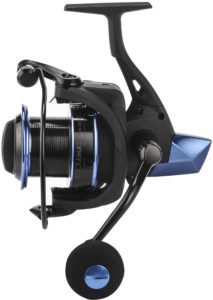
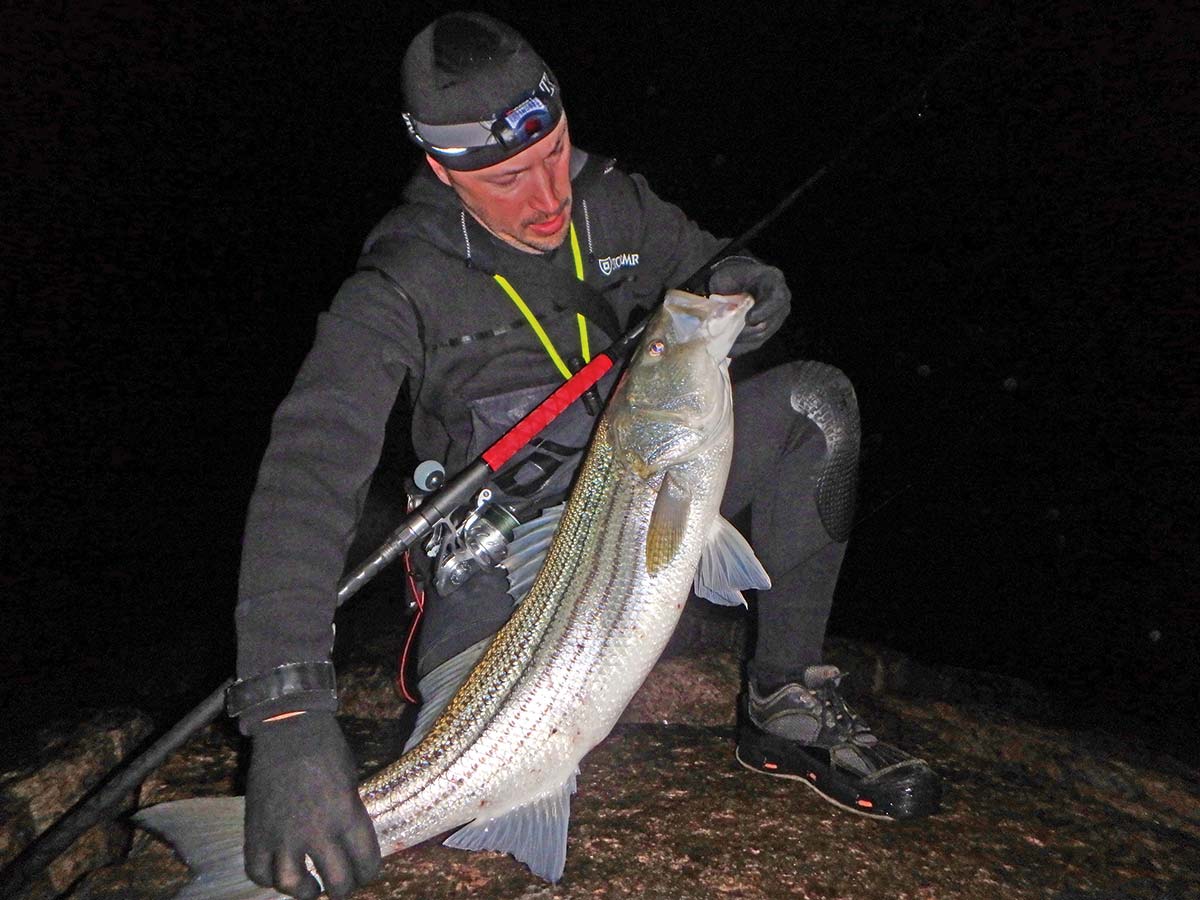
Don’t Spare The Rod
So you noticed I used 40-pound braid as a standard for reel capacity above? The choice of braid brand and diameter is purely personal; for the most part, 30-pound braid whether it’s PowerPro, Spiderwire Stealth, Berkley X9, J Braid or Sufix is more than sufficient. I have a couple of reels I’ll bang around with throughout the season loaded with X9 in 20-pound class for throwing tins at speedsters or bucktailing fluke, but I prefer 40-pound or better when chasing larger stripers mainly because I find it cuts down on wind knots. Just keep in mind that 40-pound braid is the equivalent of 10-pound mono; braid allows for a little better casting distance and less wind resistance; the fact that all the rod guides in use today easily accommodate braid is a no-brainer at this point. But matching that line, with the size of the reel you’ve chosen, to the size and length of the rod is pretty much the critical component of building a proper surf outfit.
Even with longer rods of 9 feet in length up to 11 or 12 from butt to tip, a properly balanced rod and reel means essentially that you can hold the ideal matching outfit balanced with one finger just head of the seated reel. There’s no hard fast rule for this, but that balance will reduce angler fatigue after long sessions of plugging. As for ideal length, that’s a matter of both comfort and function. The longer the rod, the better ability to cast long distances; and the faster the action means the rod is actually thicker with the bend primarily at the tip, making it the more ideal candidate for slinging big chunks of bunker. A slower action rod is essentially whippier, and is preferred for gaining leverage for longer casts. The more hardcore the surfcaster, the more options he has on racks in the garage, some long, some short, ones built for chunking and others for tossing tins. As I explain to my golf buddies, it’s like playing 18 holes with nothing but a pitching wedge in the bag.
For those getting started, the moderate fast or moderate action is probably the best middle-of-the-road, cover every variable rod. And based on reel selection, you might already have the perfect pairing out there. Daiwa for example has updated their Coastal SP Surf Spinning Rods this season. These are super affordable rods which are perfectly suited for the BG MQ Spinning Reels. In fact, the 9-footer ($129.99) was designed around throwing the Daiwa SP Minnow which has become the confidence lure for many striper hunters in the surf the last several years. Another quality and economic pairing is for those PENN users whether the new Battle III or the old school Z series; Penn Battalion Surf Rods are built on graphite composite blanks with Fuji Aluminum Oxide guides, Fuji reel seats and rubber shrink tube handles. A 10-footer will only run you about a $110, so matched to a Battle III 5000 with a spool filled with 30-pound Spiderwire Stealth, you’re looking at an outfit that’s ready to hit the beach for less than $275.
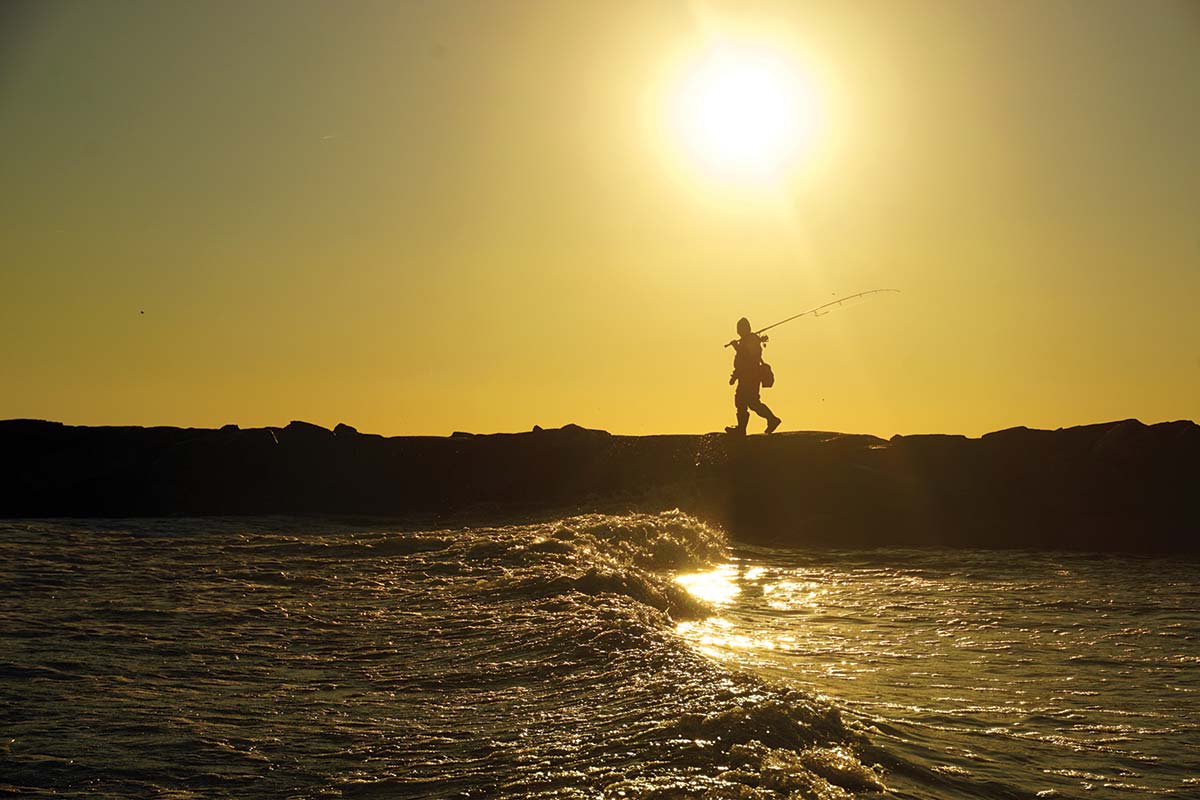
You might also combine your Shimano Saragosa or Ultegra XTD Surf reel to the Shimano Tiralejo surf rods made utilizing high modulus blank and wraps four outer layers of 90-degree graphite. I know quite a few surf guys who’ve been tackling heavy duty sharks in the wash in recent years with the 11-foot heavy model; from 9-1/2 to 12 feet in length for around $300, the Tiralejo is a tough rod with great castability.
The Tsunami SaltX rods are great with any surf spinning reel, but are ideal with the 100% waterproof SaltX Spinning Reels. You could pick up an 8-1/2-foot SaltX for about $280, or go all the way to 11 feet for another $20. The Tsunami Airwave ($90 to $175) and Airwave Elite ($110 to $230) surf sticks were one of the first to break below the price barrier when the first versions were offered to the surf crowd over 10 years ago. Based on the price and quality of these rods, I personally have several of the Airwave series rods, as well as a 10-foot Tsunami Trophy Distance Series which is awesome for tossing tins and pencils a country mile. I guess my point is, today’s cheap surf sticks are not the same cheap surf sticks that were around 40 years ago; today’s quality and engineering is light years beyond that from even the late 20th century.
With that design evolution comes some notable top shelf options as well; one of the top production rods for hardcore surfcasters in the past couple of years is the St. Croix Avid Series Surf Rods which will run from about $330 for a 9-footer up to $420 for the 12-footer. Built in the United States, the Avid surf series rods from St. Croix are build using their high modulus SC III graphite woven blanks. As Alberto Knie explained to us in 2019 when St. Croix earned best of show for their rod entries at the big ICAST show, the Avid boasts phenomenal sensitivity and strength. For a little less of an investment, you might want to look at the new surf entry from St. Croix out this fall, the “re-imagined for 2021” Triumph Surf. It’s built on the premium SCII carbon for those who appreciate high-performance at a slightly lower cost, the Sea Smoke green sticks should start appearing soon at local shops running from about $160 for a 9-footer up to $200 for the 10’6” model.
Another popular American-made brand that was once one of the only blank you’d find throughout much of the Striper Coast is from Lamiglas. The Lamiglas GSB surf rod blanks have been known as perhaps the most widely used surf blanks in the world from a builder’s perspective; about 2 or 3 years ago, Lamiglas began offering their renowned GSB blanks in an incredible factory-finished surf rod series available in 14 models from 8 to 11 feet in length and in both 1- and 2-piece versions. As for a little local motion, the “Skinner” rod was designed to the specifications of surf legend John Skinner, and the Old School or “OS” designation on two of the rods is a throw-back to the original action built into the rods when they were first debuted. These rods range in price from $380 to $460, though new surfcasters can enter the Lamiglas line in the $120 to $130 range with the 9- to 11-foot Lamiglas Insane Surf Rods.
In addition to the rod, reel, plugs and baits needed for surf success, be safe and match your surroundings gear-wise. Whether plugging or deadsticking an open, sandy beach, good chest waders (boot style) are preferred over simple hip boots, with a surf belt to cinch it up and store other essentials (pliers, lipper, etc.). A good dry top will keep you in the action when things turn foul.
When working the rocks, boulders and jetties, spiked souls are critical to maintaining a grip. In this environment, stocking foot waders with wading boots (spiked or with Korkers) will fit the bill. Those swimming from rock to rock often don a wetsuit, but again a good surf top and belt is critical to safety. If walking out to a jetty tip, it’s important to also understand the tides to ensure you don’t get stuck in a precarious position. While surfcasting is one of the best “socially distant” activities you can enjoy, it’s best to fish with a buddy in “sporty” conditions or locations.
As surfcasters begin to collect those quivers, there are plenty of more localized brands like ODM Rods or Jigging World out of New Jersey, or a host of quality rod builders in towns and beaches up and down the Striper Coast. Winter is always a great time to consider a rod building class through Mud Hole or your local tackle shop; it’s a good way to truly customize a surf road to your favorite active reel or specific way of fishing.
Some might consider this the greatest act of blasphemy as you’ll ever see printed regarding entry (or reentry) in the world of surfcasting, but no matter what grandmasters of the surf say, you don’t have to look a certain way or use a particular rod and reel combo to catch fish in the surf. The fact of the matter is, the quality of gear available today is light years from what it was four decades ago. And this first quarter century alone, the price for greatness is more reasonable than ever.
The irony in it all is that 5-gallon bucket I used to find curbside at construction sites has been replaced by big brand manufacturers charging upwards of $250. So who’s the googan now?




